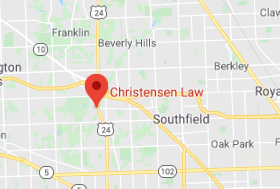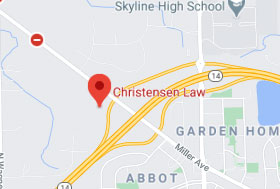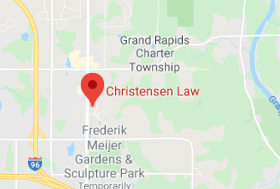
Drivers who are injured in a car accident have many options for claiming compensation. Under Michigan’s no-fault auto insurance laws, drivers can file a claim with their own insurance company for no-fault PIP benefits like medical bills and lost wages.
For passengers, the process for claiming compensation is not always as clear. Passengers have no control over whether they are involved in a crash, and they do not always have their own auto insurance policy that will cover their injuries. In these situations, it is important to know that passengers have just as many rights as drivers on the road.
If you have been hurt in a car accident as a passenger, you can still seek compensation for medical expenses, lost wages, pain and suffering and other losses. Contact the Detroit car accident attorneys at Christensen Law to learn more.
What Compensation Can Injured Passengers Claim?
Prior to July 1, 2020, passengers were eligible for unlimited lifetime no-fault PIP benefits that covered medical bills for life. However, today that law has changed. It is possible to buy insurance coverage for limited amounts of coverage instead of lifetime coverage (e.g., $250,000 or $500,000 in coverage). So, if your bills exceed the medical policy limits, you may end up having inadequate medical coverage you can sue the responsible parties for your excess medical bills.
You may also receive payment for your lost wages if you are unable to work due to your auto accident injuries. Your no-fault insurer is required to pay you 85 percent of your lost wages for up to three years, up to a monthly maximum amount that adjusts each year. If your losses exceed the monthly cap or will extend beyond three years, you may sue the responsible parties for your excess wage loss.
Finally, if you are seriously injured, you may also sue the responsible parties for compensation for your pain and suffering, your disability, and the loss in the quality of your life.
Insurance Claims for Passengers After a Car Accident
Passengers may be covered by a number of auto insurance policies when they are on the road. In order to claim damages, you must follow a specific order of priority. The priorities for filing an auto insurance claim after an accident are as follows:
- Your insurance policy – If you are a passenger and carry your own no-fault insurance in Michigan, you can file a claim under your policy.
- Your spouse or resident relative – Even if you do not have auto insurance, but your spouse or another family member in your household does, you may be able to file a claim with his or her no-fault insurer.
- Michigan Assigned Claims Plan – If there is no no-fault coverage available under the previous options, then you can submit a claim to the Michigan Assigned Claims Plan.
If you are in a vehicle that is used to transport people for hire, or in your employer’s vehicle, then your no-fault benefits will be paid by the insurer of that vehicle.
In cases involving serious injuries or where your no-fault PIP benefits do not cover the full extent of your losses, it may also be possible to sue the driver of the car you were riding in, or the driver(s) of others involved in the accident. A car accident lawyer in Detroit can advise on what to do in these complicated situations.
While the priority list of insurers applies in the majority of cases when you are hurt as a passenger, there are some exceptions. A Detroit car accident lawyer can advise on what those exceptions are, and how they affect your claim.
Do Passengers Have to File Separately After an Accident?
Under Michigan’s no-fault laws, you can file a claim with the appropriate insurance company to claim benefits such as medical expenses, lost wages, and other losses.
A lawsuit can provide compensation for medical expenses and lost income, just as a no-fault claim can. However, unlike a claim for no-fault benefits, a lawsuit can also help you recover other losses such as pain and suffering and mental health complications.
At Christensen Law, we understand that filing a passenger lawsuit against the at-fault driver could mean suing a family member or friend. That can make some people feel awkward, or even disloyal. Remember that you are seeking compensation from your loved ones’ insurance company, not demanding money directly out of their pockets.
How to File a Claim After a Car Accident as a Passenger
Many people think that to file a claim, you only have to notify the appropriate insurance company and start the claims process. Unfortunately, if you do not take the appropriate steps first, there is a good chance you will not recover the full compensation you need.
Some of the most critical actions to take after being injured as a passenger are as follows:
- Call 911. It is important to remain calm after a crash so you can report the accident and provide the information law enforcement needs. Make sure to tell emergency services the location of the accident, the number of vehicles involved, and the number of people that are injured and require medical attention. Once the crash has been reported, obtain a copy of the accident report.
- Seek medical attention. Whether medical help arrives on the scene or you visit an emergency room immediately after the crash, it is important to see a doctor as soon as possible after an accident. Even if your injuries seem minor at first, it is important to have a doctor examine you. Some serious injuries do not present symptoms right away. You need to see a doctor who can detect and treat these injuries.
- Exchange information. Although you may be covered under Michigan’s no-fault laws, it is still important to exchange information with everyone at the accident scene. Obtain the names and contact information, driver’s license numbers, and insurance information of everyone involved in the accident. You may need this for reporting, insurance, or legal purposes in the future.
- Take pictures. Even though you have rights as a passenger in a car accident, you must still prove your claim. To do this, you will need evidence. Take pictures of the accident scene, the vehicles involved, and your injuries. If there is other relevant information at the scene, such as skid marks or debris on the road, also take pictures or video of this as it can also help prove your claim.
- Obtain eyewitness statements. As a passenger in a car accident, you will be considered a very important witness. However, it is still important to speak to anyone else that witnessed the crash. Obtain their names and contact information and pass this information on to your lawyer.
- Keep an accident journal. Over time, your memories may fade about how the crash occurred, what injuries you sustained, and how they impacted your life. It is important to keep an accident journal and to update it regularly so that you do not forget these details. The quality of life you have had since the accident, particularly compared to the time before the accident, may be essential to supplement your claim.
- Talk to an attorney. It is also important to contact a lawyer after being involved in an accident as a passenger. You should do this even before you speak to the insurance company. The insurer will try to reduce, deny, or delay your claim. Your lawyer can stand up for your rights and fight for your best interests.
Who Pays for Passenger Injuries
Which auto insurance company has “priority” for passenger injuries depends on what kind of vehicle was being ridden, and what insurance policies are available. The “priority” is a ranking between those policies described in the Michigan No-Fault Act. Defense attorneys will sometimes file motions claiming that their auto insurance company isn’t the “first priority,” so they should be allowed out of your case.
But priority really isn’t all that complicated. Here’s the list:
- Your own policy. If you have a no-fault auto insurance policy, it is the first priority to pay for your passenger injuries.
- Resident Relatives. If you don’t have a policy but you live with a family member who does, you are covered by that policy.
- Vehicle Owner. Next comes the insurance company that covers the car you were in when you were injured.
- Driver of Your Vehicle. If you were riding in an uninsured vehicle, it is up to your driver’s policy to pay for your passenger injuries.
- Other Vehicle Owner. Once everything having to do with your vehicle is exhausted, you turn to the other vehicle involved in the accident. The owner’s policy applies next.
- Other Driver. If that vehicle too was uninsured, the other driver’s policy applies.
- Assigned Claims Facility. If none of the other options are available, your case will be assigned to one of the state’s licensed auto insurers by an entity called the Assigned Claims Facility.
How Can a Lawyer Help Me If I Was Injured as a Passenger?
You should speak to a lawyer any time you are seriously injured in a car accident, whether you were a passenger or the driver. This is especially true if the drivers and vehicles involved were not insured. Many times, there are ways to be compensated when the at-fault driver is uninsured or flees the accident scene.
A lawyer can determine the appropriate insurance company to file a claim with and, if necessary, take steps to file a lawsuit in court.
A lawyer will not only determine the appropriate insurer to file a claim against, but they will also negotiate with them to help you recover the full settlement you deserve. Insurance companies are notorious for offering low settlements that will not fully cover the cost of your injuries. The insurance company may even try to deny your claim outright. A lawyer will not allow insurers to get away with this.
How Can Detroit Car Accident Lawyers at Christensen Law Help?
If you have been injured as a passenger, do not hesitate to call our car accident lawyers in Detroit. At Christensen Law, our experienced attorneys can advise you about your claim, what compensation you may be eligible for, and will help you seek the compensation you deserve.
Call us today or fill out our online form to schedule a free case review.






